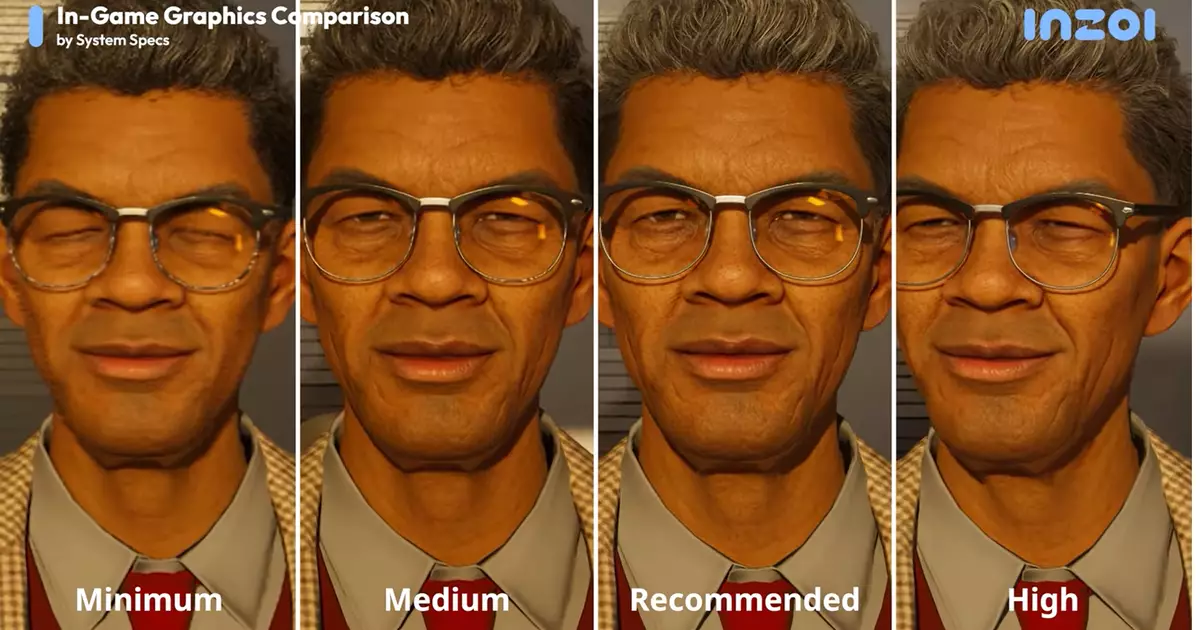As the video game industry continues to evolve, players are increasingly witnessing the advent of generative AI in game design. One of the most ambitiously anticipated titles leveraging this technology is inZOI from Krafton. The introduction of live generative AI mechanisms allows players to influence not just the environment but also the behaviors and appearances of characters, referred to as Zois in this gaming universe. This particular allure—whereby players can create everything from wardrobes to animated interactions—brings a fresh sense of creativity to life management games.
However, there’s an underlying caution that comes with these remarkable advancements. While it is exciting to imagine the creative potential of a game that evolves based on user input, the implications of AI-generated content raise significant questions. Can we trust that the algorithms will not favor certain aesthetics or simulate societal norms that might propagate biases? The game distinguishes itself through its advanced technology, but it’s paramount to scrutinize the ethical dimensions that accompany it.
A Visual Aesthetic That Disturbs
Another layer of apprehension revolves around the visuals produced by inZOI. The game’s emphasis on photorealism could be a double-edged sword. While impressive graphics can elevate the gaming experience, they pose a risk of unsettling immersion. Many players have noted a growing discomfort with hyper-realistic virtual avatars that evoke a sense of eeriness rather than connection. The marketing imagery of perfect-looking Zois suggests an unattainable beauty standard, leaving gamers to grapple with the implications of such representations in a world already rife with body image issues.
Notably, the NPCs showcased in promotional materials appear to be styled as fashion models, raising further concerns about the authenticity of character representation. Are players looking at characters who reflect human diversity and complexity, or are we merely observing a parade of idealized figures? The unsettling nature of these visuals could steer players into a voyeuristic experience—witnessing an idealized, yet disconcerting, version of life. As we delve deeper into the game’s structure and systems, it’s critical to evaluate how these decisions impact player perceptions and social narratives.
System Requirements and Accessibility
Krafton has taken a commendable step in addressing accessibility by offering features aimed at optimizing performance across various hardware setups. The high system requirements for inZOI might deter some players, prompting the company to assure fans that it is dedicated to improving accessibility without compromising quality. However, one cannot help but yearn for more robust support for lower-spec machines. The absence of a “potato mode” could alienate a segment of gamers who appreciate simplified but innovative gameplay.
When a game runs on minimal specs, players often engage with its core mechanics in entirely new ways. Stripped of extravagant graphics and overwhelming details, a game’s fundamental experience can sometimes shine through. It’s in these lower resolutions that players can appreciate art direction devoid of distractions. As such, the absence of a low-end gameplay mode in inZOI deprives players of the opportunity to connect with a more elemental version of the game.
Looking Ahead
As we stand on the brink of inZOI’s early access launch, there is a dichotomy between thrilling innovation and prudent skepticism. The combination of generative AI and photorealism holds great promise, yet we must remain vigilant. Players deserve to engage with a platform that not only innovates but also respects diversity and individual expression. The merging of game mechanics with social implications presents a compelling landscape ripe for exploration, and it is the community’s discussions and feedback that will shape this narrative moving forward.
In navigating the intricate web of technological progress and social awareness, inZOI could lead the charge toward a future where gaming is reflective of real-world complexities—but only if it prioritizes the voices and experiences of its players. As we prepare to step into this new virtual neighborhood, the question remains: will inZOI carve out a space that resonates deeply with its audience, or will it remain a dazzling but superficial reflection of a life unattainably curated? The expectation is high, and the stakes are palpable.

